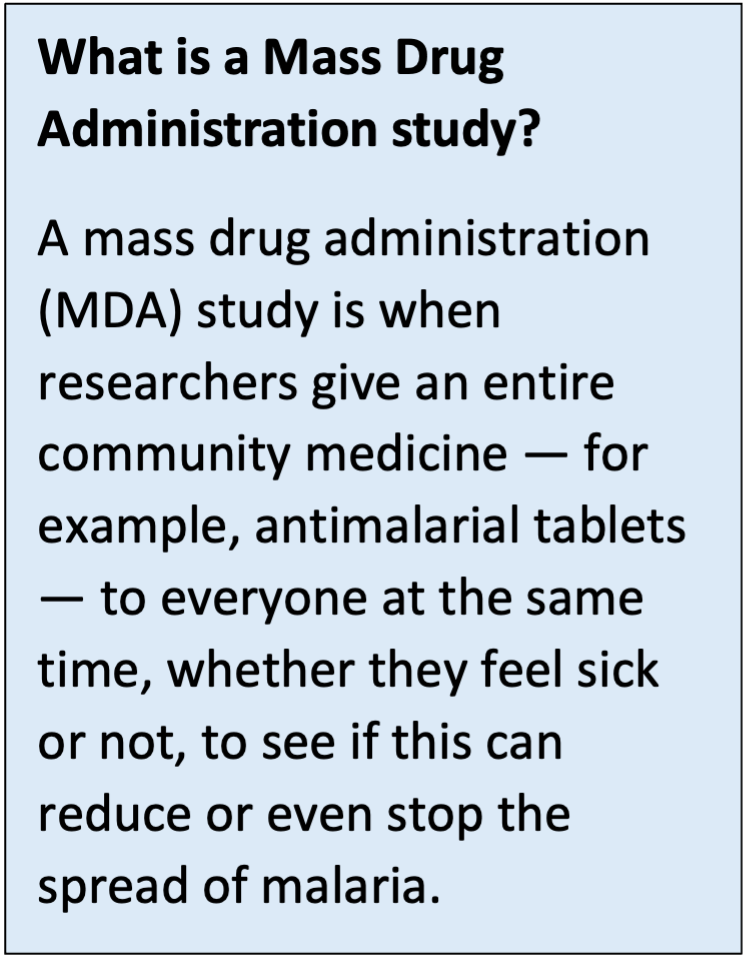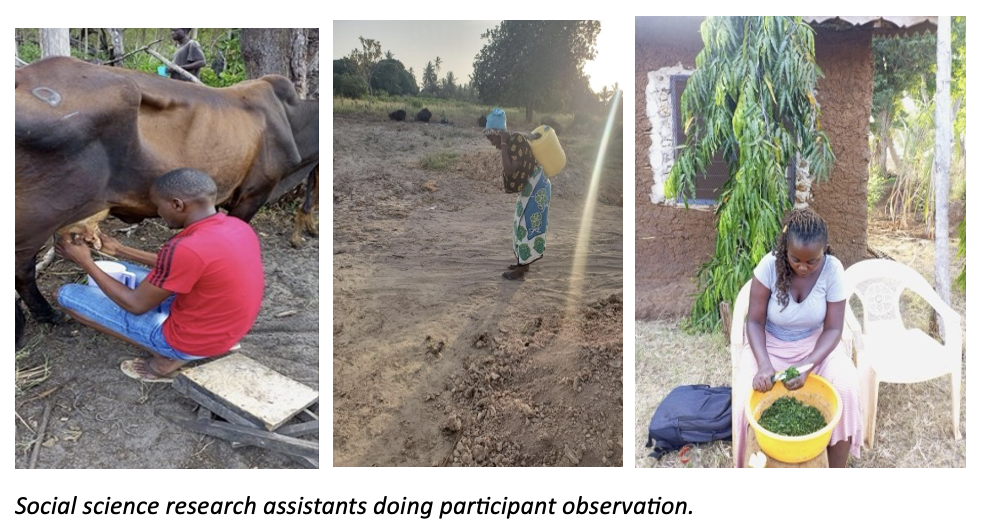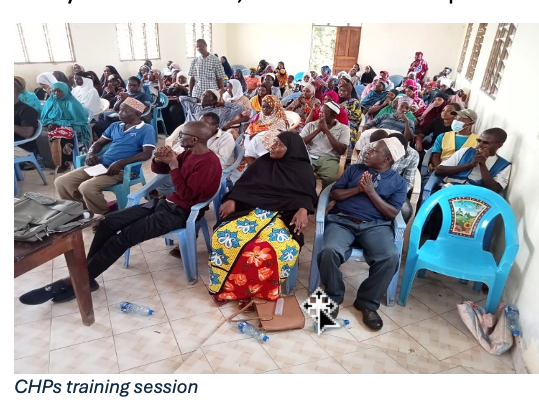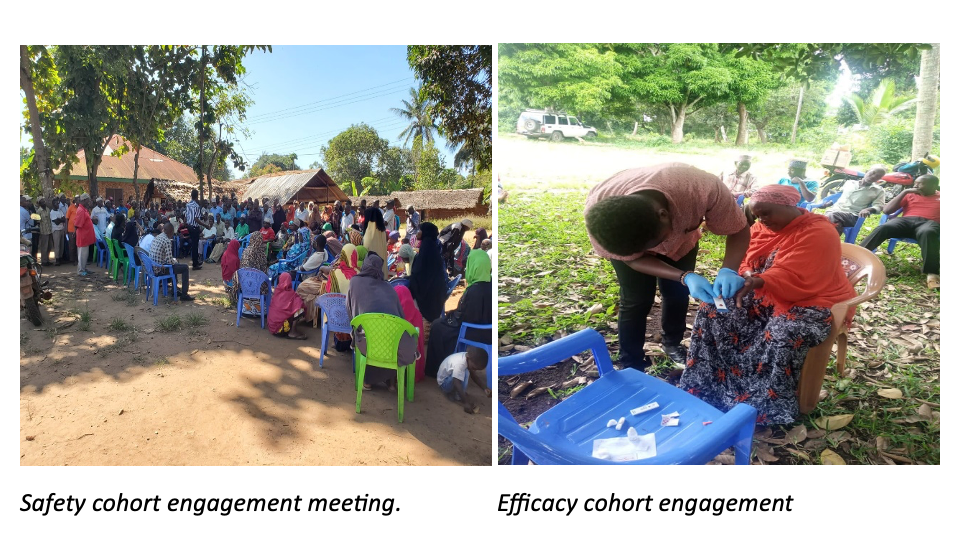 Recently, a series of mass drug administration (MDA) studies have been conducted in West Africa to assess their impact on malaria transmission using ivermectin. Ivermectin is a potent endectocide with demonstrated potential for killing mosquitoes that transmit malaria when they feed on treated individuals, thereby interrupting parasite transmission. To generate robust evidence on its efficacy and safety, the BOHEMIA consortium conducted cluster-randomised controlled trials designed to evaluate ivermectin as a complementary vector control strategy for malaria prevention. The central research question was whether repeated mass administration of ivermectin, delivered in three monthly doses at the onset of the short rainy season, could reduce malaria transmission in an eligible population while maintaining an acceptable safety profile. Achieving conclusive results in such trials requires high levels of community participation, typically with coverage between 65% and 80%. This, in turn, necessitates effective community engagement strategies to encourage uptake and ensure compliance. In this article, we examine the approaches to community engagement implemented in Kwale County, Kenya, to support high participation and adherence in the BOHEMIA trial.
Recently, a series of mass drug administration (MDA) studies have been conducted in West Africa to assess their impact on malaria transmission using ivermectin. Ivermectin is a potent endectocide with demonstrated potential for killing mosquitoes that transmit malaria when they feed on treated individuals, thereby interrupting parasite transmission. To generate robust evidence on its efficacy and safety, the BOHEMIA consortium conducted cluster-randomised controlled trials designed to evaluate ivermectin as a complementary vector control strategy for malaria prevention. The central research question was whether repeated mass administration of ivermectin, delivered in three monthly doses at the onset of the short rainy season, could reduce malaria transmission in an eligible population while maintaining an acceptable safety profile. Achieving conclusive results in such trials requires high levels of community participation, typically with coverage between 65% and 80%. This, in turn, necessitates effective community engagement strategies to encourage uptake and ensure compliance. In this article, we examine the approaches to community engagement implemented in Kwale County, Kenya, to support high participation and adherence in the BOHEMIA trial.
Formative research
The clinical trial was supported by the social science work package which adopted an ethnographic approach to data collection. This comprised social science research assistants moving to live in six selected villages within the communities targeted for the MDA nine months before the MDA. Typically, each research assistant would stay with a host from the community for one month. The research assistants participated in day-to-day life and collected data through observations, informal conversations, in-depth interviews (IDIs), and focus group discussions (FGDs). The purpose of the ethnographic formative research was to develop community trust and to explore the social, cultural, and economic context in which the MDA was to take place. The findings then informed the development of locally appropriate community engagement messages and strategies and identified effective approaches for implementing the MDA. During their stay in the villages, research assistants engaged with community members giving them information about the trial while the community members opened up about their fears, concerns and expectations of the trial.
Armed with this information, back in the office reflexive meetings were held with the community liaison officer, operations team and project leads. The outcomes of the discussions fed into the community engagement messages and strategies that were used prior to the actual MDA.

Stakeholder engagement
The engagement began with all the relevant stakeholders who could potentially influence the trial. This was important, not only as a requirement for ethical conduct of research, but also to gain stakeholder support and nurture their buy-in into the activities that would take place during the trial (MDA). This began at the highest level, the county health management team, where the entire project was introduced to explain the planned activities and to invite their input into the community engagement and MDA delivery strategy. Approvals were sought from both the county administrative system and the National government administrative system. In the national government arm, permission was sought from the county commissioner which cascaded down to the community gatekeepers through the sub-county administrators, chiefs and their deputies to the village elders and “nyumba kumi” (village committees).

From the department of health, permission and approvals were sought from the county department of health down to the sub-county, to individual health facilities within the implementation area including ward and village administrators. Representatives from the local dispensaries and health centres were invited for a training session to inform them about the trial and how they could support it by giving information to community members. In addition to the training session for healthcare workers, there was a separate session with the community health promoters (CHPs) who are embedded within the community. Community Health Promoters (CHPs) helped in mobilising community members to take part in the trial. To do this well, they needed accurate information about the trial and had to be ready to answer any questions or concerns from community members.
School engagement
In the run up to the MDA, the study team conducted several school engagement activities. They visited several school sensitised students about the malaria disease, it’s causes, how it is spreads and what actions thy could take to protect themselves and their community against malaria. This forum was also used to inform the students about the forthcoming MDA and that they could be among those selected for the efficacy cohort to t be tested for malaria at their homes. This was also an opportunity to encourage the learners to pursue science and research related courses in future.

Community engagement for the trial
The trial was conducted in 84 clusters spread across 69 administrative villages encompassing a population of 28,932 adults and 2871 children 5 to 15 years. This trial comprised two cohorts; the safety cohort which was made up of all eligible participants within the borders of a cluster and the ‘efficacy cohort’ which comprised children aged 5 to 15 years. Community Engagements for these two cohorts were done separately since the activities to be done were different and within different time frames. All the eligible participants in the safety cohort were randomised into two groups: the first group received an ivermectin dose once a month for 3 consecutive months; and to allow for comparison, the second group received albendazole once a month for 3 consecutive months. Albendazole was used for comparison because it has no mosquitocidal effect but provided the benefit of deworming increasing comparability given some deworming in both groups. For the efficacy cohort, the children (5-15 years) were tested for malaria, and a dry blood spot (DBS) sample was taken for further analysis for a period of six months after the first round of MDA. In the event of a positive malaria case, treatment was provided in accordance with Kenya’s national malaria treatment guidelines.
Since it was not logistically possible to have all the community members attend the engagement meetings, the community leaders that is the chiefs, their deputies and village elders were tasked to mobilise community representatives to attend the meetings with an aim of including both males and females and ensure community representation. In addition, looking at the number of administrative villages to be covered (69) it was not possible to hold meetings in each village. Therefore, the meetings were planned and organised in community health units (CHU)- health service structures with a defined geographical area and assigned to a health facility. There were 13 community units in the study area, the number of villages within a community health unit were between 3 to 10 villages depending on the population. This translated to 13 safety and 13 efficacy community engagement meetings. Each community meeting hosted between 150 to 350 community members.
Composition of the engagement team
There were two engagement teams one led by the community liaison officer and the other by the social science research officer. For the safety engagements each team had either a medical officer or a clinical officer, a pharmacist or a pharmaceutical technologist, a representative from the sub-county department of health, local administrators it could either be a chief or his/her deputy and the village elders representing each village. Also, the drug distributors who were hired locally and were to distribute drugs to the members of that community unit were present supported by the community health promoters representing those villages. The purpose of having the drug distributors and the CHPs in the meetings was to introduce them to the community members so that they were aware of who was to bring the drugs to them. During the meetings the study team explained to the community members the purpose of the trial, the eligibility criteria, the processes to be used in the trial and the voluntary nature of participation. The community members were given a chance to ask questions, air their concerns and expectations. These were responded to by the study team and the community members felt that they were being respected by being informed about the intervention before it happened.
For the efficacy meetings, there was an addition of a laboratory technologist who demonstrated to the community members how the malaria testing and the collection of the dry blood spot samples would be done. Engagement for this cohort was targeted in that only the parents or guardians to the children who had been pre-selected for this activity of the trial were invited.

Addressing rumours and misconceptions about the study
In any study or research involving human participants, it is not unusual to have rumours and misconceptions emerging during the study. BOHEMIA was not an exception, after the first round of the MDA rumours started emerging about the drugs, malaria testing and collection of the dry blood spot samples which threatened to affect the uptake of the drugs. In response, community meetings were swiftly organised in the specific areas where the rumours were deemed to originate, and in areas where there was reported low uptake. These rumours were addressed and the misconceptions dispelled and a steady increase in the uptake was reported in these areas.
Conclusion
This robust community engagement and concerted efforts from all the stakeholders saw the BOHEMIA clinical trial having an uptake of 62.43% ,68.83% and 67.71%, in the ivermectin arm and 68.50%, 75.01% and 75.36% in the albendazole arm in rounds one, two and three respectively. This resulted in a positive trial outcome with a 26% drop in malaria incidence in the intervention arm compared to the control arm. In addition to the positive results, several lessons were learnt from the community engagement including:
- Community engagement must be continuous and responsive throughout the life of the study.
- Understanding the context of the target community is important because it helps to design an engagement strategy that is responsive and culturally sensitive to the local context as well as crafting messages to be used during the engagement.
- How scientific information is communicated to the community members is important to ensure they understand what the research or the intervention is about. This helps to minimise rumours and misconceptions that may have a direct effect on the intervention.
